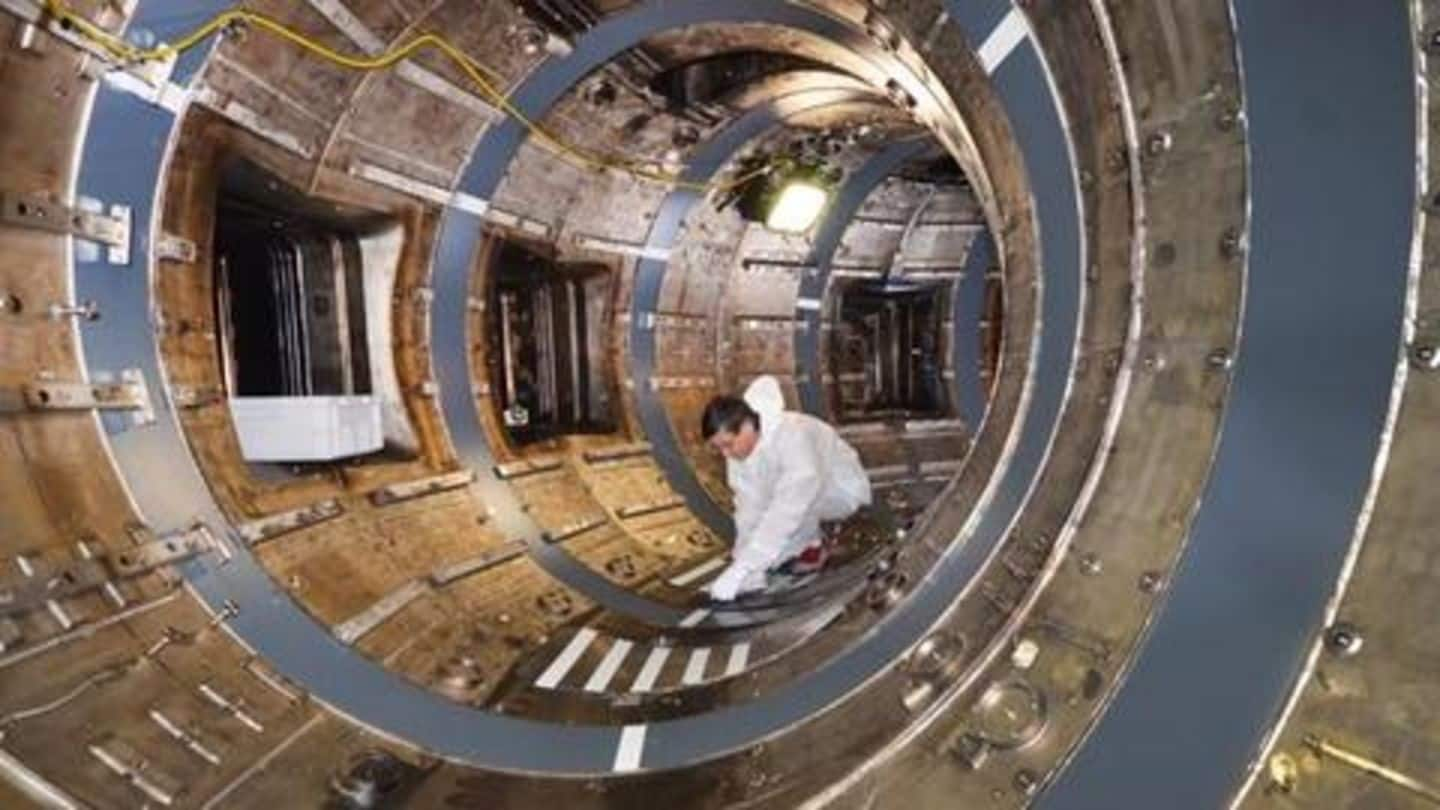
How India is helping create a 'miniature Sun' on Earth
What's the story
While the Indian Space Research Organization is planning to launch a satellite to study the Sun by 2020 (the Aditya-L1 mission), India and some other nations are planning to bring the Sun to Earth.
India is among the 35 countries that are working on the world's largest fusion device, International Thermonuclear Experimental Reactor (ITER), which will serve as an unlimited source of clean energy.
Details
Firstly, let's look into the ITER Tokamak project
ITER Tokamak is a 35-year-long collaborative project between USA, Russia, South Korea, China, Japan, European Union and India to harness the power of nuclear fusion (when two atoms fuse).
The Tokamak is designed to produce 500MW from 50 MW input heating power.
The ITER reactor is located in Saint-Paul-lez-Durance, France, and weighs 23,000 tonnes (three times the Eiffel Tower's weight).
Working
Here's how the ITER Tokamak would function
Fusion is the reaction that powers the Sun and stars, where two Hydrogen atoms fuse to form Helium and energy.
At ITER, two Hydrogen isotopes, Deuterium and Tritium, will be fused to produce Helium and a neutron. The DT reaction produces high energy gain at relatively low temperatures.
The energy produced will then be used to convert water to steam, and turn turbines to generate electricity.
India's contribution
What is India's role in ITER's fusion project?
However, during the fusion reaction, the reactor will reach temperatures of 150 million°Celsius, 10 times hotter than the Sun's core. That's where India steps in.
According to NDTV, the reactor will be housed inside "world's largest refrigerator," designed by Larsen & Toubro in Gujarat. India also contributed Rs. 17,500cr to ITER.
The cryostat weighs 3,850 tonnes, and is half the height of Qutab Minar.
Quote
India also contributing all cooling systems, neutron seals, etc.
Notably, ITER Director-General Bernard Bigot told IANS in July, "Besides cryostat, Indian companies are providing all cooling systems, cryolines, warmlines, neutron seals and many other components. So we can proudly say that the Indian industry is doing very well in terms of delivery of equipment."
Quote
Chief ITER Scientist called India a 'valuable partner'
Separately, chief ITER Scientist Dr. Tim Luce called India a "valuable partner" in the project.
ITER scientist Dr. Mark Henderson said, "This place to me is the coolest place on Earth, because here, in the near future, we'll have a little Sun on Earth and it'll be a 150 million°Celsius so it'll be the hottest place on Earth, ten times hotter than our Sun."
Information
Other public, private sector Indian companies also involved in ITER
Apart from L&T, many public and private sector companies like INOX India Ltd, Engineers India Ltd, Tata Consultancy Services, alongside firms including Kirloskar Brothers, Kirloskar Chillers, Kirloskar Pumps, Kirloskar Motors, Paharpur Cooling Towers and Electronics Corporation of India Ltd, et al., are involved in ITER.
Benefits
Here are the benefits of ITER in clean energy production
The fusion project will be a "potential source of safe, non-carbon emitting and virtually limitless energy."
Dr. Luce told NDTV that the only CO2 produced during the project will be exhaled by the scientists.
Fusion also doesn't generate any long-lived radioactive nuclear waste, unlike nuclear fission.
Furthermore, participating nations, such as India, will have access to the experimental results and any generated intellectual property.
Future
ITER operations expected to start by 2025
To note, operations are expected to start by 2025 and by 2040, the DEMO reactor, a full-scale electricity generating unit, will be complete.
Atomic Energy Commission ex-Chairman Dr. Anil Kakodkar said, "Having done so much on ITER, we should prepare ourselves to do the DEMO plant done on Indian soil- an International DEMO plant done on Indian soil- that will enable us to leapfrog."